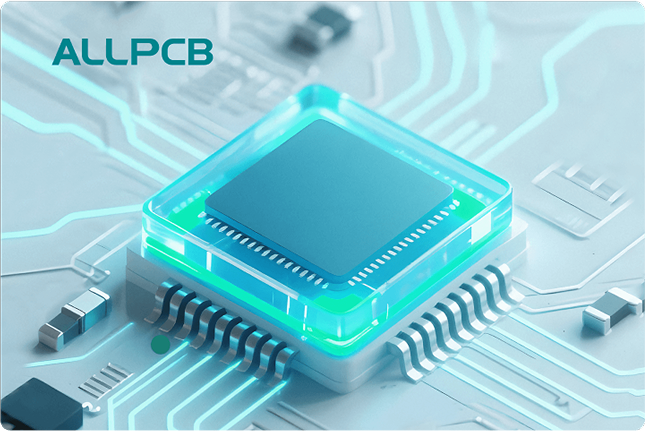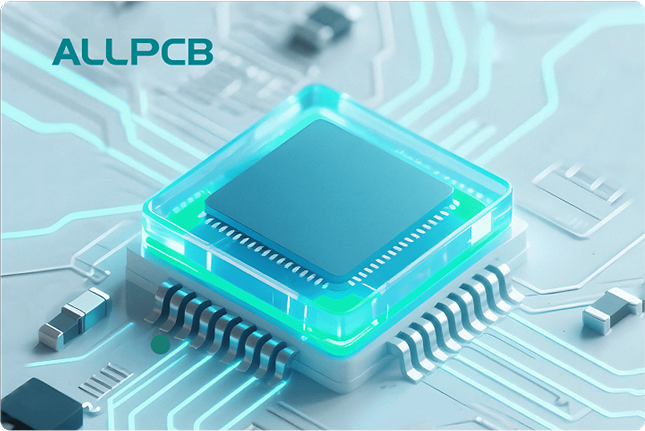In the world of high-speed digital circuits, choosing the right switch is critical to maintaining signal integrity and ensuring optimal performance. Whether you're designing a PCB for telecommunications, data centers, or consumer electronics, the switch you select can make or break your system's reliability. This blog post dives deep into the process of selecting a high-speed switch while addressing key factors like signal integrity, impedance matching, transmission line effects, and PCB layout best practices. We'll guide you through actionable steps and technical insights to help you minimize issues and achieve a robust design.
Why Switch Selection Matters in High-Speed Digital Circuits
High-speed digital circuits operate at frequencies where even small design choices can lead to significant signal degradation. Switches, which control signal routing or power delivery, are often a weak link if not chosen carefully. A poorly selected switch can introduce noise, reflections, or delays, compromising signal integrity and leading to data errors or system failures. By focusing on the right parameters—such as bandwidth, impedance, and switching speed—you can avoid these pitfalls and ensure smooth operation at speeds exceeding 1 GHz or more.
In this comprehensive guide, we'll explore how to select a high-speed switch and optimize your design to tackle common challenges. Let’s break it down step by step.
Understanding Signal Integrity in High-Speed Designs
Signal integrity refers to the quality of an electrical signal as it travels through a circuit. In high-speed digital circuits, maintaining signal integrity is crucial because signals with fast rise times (often in the picosecond range) are more susceptible to distortion. Common issues include:
- Reflections: Caused by impedance mismatches, leading to signal echoes that interfere with data transmission.
- Crosstalk: Interference between adjacent signal lines, especially in densely packed PCBs.
- Noise: External or internal interference that degrades signal clarity.
- Timing Errors: Delays or jitter introduced by improper switch selection or layout.
Switches play a direct role in signal integrity. A switch with high insertion loss or poor isolation can amplify these problems, especially in applications like DDR4 memory systems or PCIe 4.0 interfaces running at 16 GT/s. Therefore, selecting a switch with minimal impact on signal quality is the first step toward a reliable design.
Key Parameters for Selecting a High-Speed Switch
Choosing the right switch for high-speed applications requires evaluating several technical specifications. Below are the most important factors to consider:
1. Bandwidth and Frequency Response
The switch must support the frequency range of your signals. For instance, if you're working on a system with a 5 GHz clock rate, the switch should have a bandwidth of at least 5 GHz, ideally with some margin (e.g., 6-7 GHz) to account for real-world losses. Look for switches with flat frequency response curves to ensure consistent performance across your operating range.
2. Insertion Loss and Return Loss
Insertion loss measures the signal power lost when passing through the switch, while return loss indicates how much signal is reflected back due to impedance mismatches. For high-speed designs, aim for switches with insertion loss below 1 dB and return loss better than -20 dB at your operating frequency. Higher losses can degrade signal amplitude and cause errors in data transmission.
3. Switching Speed and Rise Time
In high-speed circuits, switches must transition between states quickly to avoid introducing delays. A switch with a rise time slower than your signal’s rise time (e.g., 100 ps for a 10 Gbps signal) can distort edges and cause timing issues. Select switches with rise times at least 20-30% faster than your signal requirements.
4. Isolation and Crosstalk
Isolation refers to how well a switch prevents signal leakage between channels when it’s in the off state. Poor isolation can lead to crosstalk, where signals from one channel interfere with another. For multi-channel designs, choose switches with isolation values better than 30 dB at your frequency of operation to minimize interference.
5. Power Handling and Voltage Rating
Ensure the switch can handle the voltage and current levels in your circuit without breakdown or excessive heat generation. For high-speed applications, low-power switches are often preferred to reduce thermal noise, but they must still meet the system’s requirements.
Impedance Matching: A Critical Factor for Signal Integrity
Impedance matching ensures that the switch and the connected transmission lines have the same characteristic impedance, typically 50 ohms or 100 ohms in high-speed designs. Mismatches cause signal reflections, which degrade signal integrity and increase bit error rates. Here’s how to address impedance matching when selecting a switch:
- Check Switch Impedance: Verify that the switch’s input and output impedance matches your system’s requirements. Many high-speed switches are designed for standard impedance values like 50 ohms.
- Use Controlled Impedance Lines: Design your PCB traces as controlled impedance lines to match the switch. For a 50-ohm system, calculate trace width and spacing using a stack-up calculator based on your board’s dielectric constant (typically 4.2 for FR4 material).
- Minimize Discontinuities: Avoid abrupt changes in trace width or vias near the switch, as these can introduce impedance mismatches. Use smooth transitions or impedance-matched connectors if needed.
For example, in a 10 Gbps USB 3.2 design, even a 5% mismatch in impedance (e.g., 52.5 ohms instead of 50 ohms) can cause reflections strong enough to corrupt data packets. Proper impedance matching is non-negotiable for high-speed circuits.
Transmission Line Effects and Switch Placement
In high-speed designs, PCB traces behave as transmission lines rather than simple conductors. At frequencies above 100 MHz, signals propagate as waves, and effects like delay, reflection, and attenuation become significant. The placement and routing of a switch directly impact these transmission line effects.
Keep Signal Paths Short
Long traces increase signal delay and attenuation. Place the switch as close as possible to the source or load to minimize trace length. For a 5 GHz signal, a 1-inch trace on FR4 can introduce a delay of about 150 ps, which may be unacceptable for tight timing margins.
Avoid Stubs and Branches
Stubs or unused trace segments act as antennas, causing reflections. Route traces to the switch without branches, and if a stub is unavoidable, keep it shorter than 1/10th of the signal’s wavelength (e.g., less than 6 mm for a 5 GHz signal in FR4).
Match Trace Lengths
In differential signaling (common in high-speed designs like PCIe or HDMI), ensure that the positive and negative traces to the switch are of equal length. A length mismatch of just 5 mm can introduce skew, leading to data errors at high speeds.
PCB Layout Best Practices for High-Speed Switches
A well-designed PCB layout is just as important as selecting the right switch. Poor layout can negate the benefits of a high-quality switch, so follow these best practices to optimize performance:
1. Use a Solid Ground Plane
A continuous ground plane beneath the switch and signal traces reduces noise and provides a low-impedance return path for high-speed signals. Avoid splitting the ground plane under the switch, as this can create loops and increase EMI.
2. Route High-Speed Signals on Inner Layers
For multilayer boards, route high-speed signals on inner layers sandwiched between ground planes. This setup shields signals from external interference and maintains consistent impedance. For example, a 4-layer board with signal traces on layer 2 and ground on layers 1 and 3 offers good protection.
3. Minimize Via Usage
Vias introduce inductance and capacitance, disrupting signal integrity. If vias are necessary to connect the switch to other layers, use microvias or keep the via count to a minimum. A single via can add 1-2 nH of inductance, enough to distort a 10 GHz signal.
4. Decouple Power Supply Lines
Place decoupling capacitors (e.g., 0.1 μF and 1 μF) near the switch’s power pins to filter noise from the power supply. Position these capacitors within 1-2 mm of the pins for maximum effectiveness, ensuring clean power delivery during fast switching.
5. Follow Manufacturer Guidelines
Always refer to the switch datasheet for specific layout recommendations. Many manufacturers provide reference designs or layout templates for high-speed applications, which can save time and reduce errors.
Common Pitfalls to Avoid When Selecting a High-Speed Switch
Even with the best intentions, designers can make mistakes that compromise signal integrity. Here are some common pitfalls and how to avoid them:
- Choosing a Switch Based on Cost Alone: A cheaper switch may save money upfront but can lead to costly redesigns if it doesn’t meet bandwidth or isolation requirements.
- Ignoring Temperature Effects: High-speed switches can heat up during operation, altering their performance. Ensure the switch’s operating temperature range matches your system’s environment (e.g., -40°C to 85°C for industrial applications).
- Overlooking Package Size: A switch in a large package may require longer traces or more vias, increasing signal degradation. Opt for compact packages like QFN or BGA for high-speed designs.
- Neglecting Simulation: Always simulate your design with the chosen switch using tools like SPICE or a field solver to predict signal integrity issues before fabrication.
Conclusion: Building Reliable High-Speed Digital Circuits
Selecting the right switch for high-speed digital circuits is a balancing act between technical specifications, PCB layout, and system requirements. By prioritizing factors like bandwidth, impedance matching, and transmission line effects, you can minimize signal integrity issues and ensure reliable performance. A well-designed layout further enhances the switch’s effectiveness, reducing noise and reflections in your circuit.
Start by defining your system’s needs—whether it’s a 10 Gbps data link or a 5 GHz RF application—and match them with a switch that exceeds those requirements. Combine this with careful PCB design practices, and you’ll be well on your way to a robust, high-speed design. With the insights provided in this guide, you have the tools to make informed decisions and tackle the challenges of modern electronics head-on.
 ALLPCB
ALLPCB







